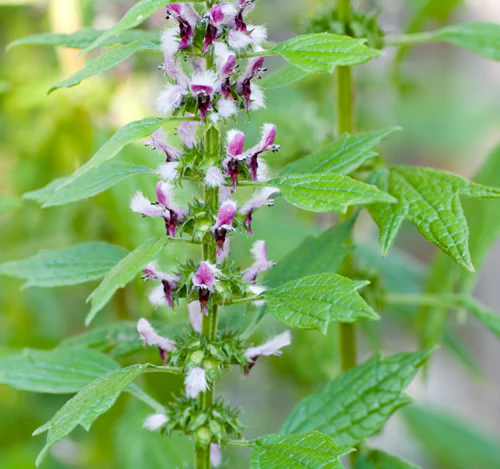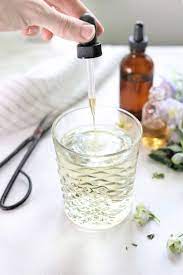Don't Play With Your Emotions!
- Gloria Brown
- Jan 23, 2023
- 6 min read
let's talk about what herbs can help soothe our emotions

Dimensions of WellBeing
Emotions play an important role in our overall well-being. Our emotions can influence how we think, feel and act in our daily lives. They can affect our physical health, our mental health, and our relationships with others. Positive emotions such as joy, gratitude, and contentment can help us to feel energized and engaged in life. Negative emotions such as anger, fear, and sadness can lead to mental and physical stress and can disrupt our lives. It is important to be aware of our emotions and to understand how they can affect our well-being. Learning how to manage our emotions in healthy ways can help us to lead happier and healthier lives.
Managing our emotions in healthy ways can be a challenge, but there are some strategies that can help. One is to practice mindful meditation, which helps us to stay present in the moment and observe our thoughts and feelings without judgment. Another is to practice positive self-talk, which helps us to reframe negative thoughts into more constructive ones. Additionally, engaging in regular physical activity can help to both release tension and improve our mood. Also, talking to a trusted friend or counselor can help us to process our emotions in a safe and supportive environment. Finally, finding herbal allies can add one more layer of help for our mind, body, and spirit.
Here are some herbs that can be helpful for emotional well-being: lavender, chamomile, St. John's Wort, rosemary, borage, and motherwort. Lavender is often used to reduce stress and anxiety, while chamomile can help to relax and soothe the nerves. St. John's Wort is known for its antidepressant properties, while rosemary can help to boost energy and focus. Borage is used to increase courage and reduce fear, and motherwort is used to help with grief and depression. I'd like to talk a little bit about the last two, borage and motherwort, which might not be that familiar to some of you!
Borage Motherwort
BORAGE
Borage is an herb native to the Mediterranean region and is commonly used as a culinary herb. It has a cucumber-like flavor and is often used to enhance salads, soups, and other dishes. Its leaves, flowers, and seeds are edible, and the dried leaves can be used to make tea. Borage is also known for its medicinal properties, as it is believed to possess anti-inflammatory, antioxidant, and anti-depressant properties. It has also been used to treat skin and respiratory conditions, among other ailments.
BORAGE RECIPES
There are some great recipes that use borage or motherwort. Here are a few ideas to get you started:
Borage and Mint Pesto: This tasty pesto can be used to top pasta, fish, or vegetables. Simply mix together one cup of borage leaves, one cup of mint leaves, three cloves of garlic, one-half cup of olive oil, and one-half cup of grated Parmesan cheese. Place these ingredients in a food processor and pulse until combined.
Borage and Potatoes: This simple side dish is perfect for a weeknight meal. Saute two cups of chopped borage leaves with one chopped onion and two cloves of garlic in one tablespoon of olive oil. Add four cups of diced potatoes and one-half cup of water. Simmer for 15 minutes. Season with salt and pepper and serve hot.

HOW TO MAKE A BORAGE TEA
Making borage tea is a simple process that can be done with a few ingredients. Here are the steps:
Gather 2 tablespoons of borage leaves and flowers.
Bring 2 cups of water to a boil in a pot.
Put the borage leaves and flowers into the boiling water.
Simmer on low heat for 10 minutes.
Strain the tea into a cup and enjoy!
Borage tea has many potential health benefits and is a great way to relax and unwind. I hope this helps you make your own delicious borage tea! I hope these recipes give you some ideas for using borage! Enjoy! MOTHERWORT
Motherwort is an herb that has been used for centuries to treat a variety of ailments. It is a hardy perennial native to Europe and Asia, but it is now grown in many places around the world. It has a tall, erect stem, with dark green leaves and small, pinkish-purple flowers that bloom in late summer. The leaves, flowers, and roots of motherwort are used for medicinal purposes. It is known to have sedative, antispasmodic, and astringent properties, and is used to treat ailments such as anxiety, insomnia, and menstrual cramps. Motherwort is also used to improve circulation and digestion, and can even be used to help reduce menopausal symptoms.
ADDITIONAL RECIPE IDEAS
Here are a few more ideas to get you started:
Add borage or motherwort to a salad or a stir-fry for a delicious flavor.
Make a tea with borage or motherwort to enjoy a calming, herbal beverage.
Infuse borage or motherwort into your favorite oil to create an herbal oil for massages and other applications.
Mix borage or motherwort into your favorite sauces for a unique and flavorful addition.
Create a tincture with borage or motherwort and add it to drinks or food for a subtle herbal flavor.
I hope these ideas help you explore the possibilities with borage and motherwort. Enjoy!

HOW TO MAKE A MOTHERWORT TEA
Making motherwort tea is a simple process. You will need 1 teaspoon of dried motherwort herb, 1 cup of boiling water, honey or other sweetener to taste (optional).
To make the tea, steep the dried herb in boiling water for 10-15 minutes. Strain the tea and serve it hot or cold, adding a sweetener of your choice if desired. Enjoy your soothing and calming cup of motherwort tea!
MOTHERWORT TINCTURE USES
Motherwort is highly indicated for these four common health concerns for women during menstruating, menopausal, and post-menopausal years:
1. Menstrual cramps - ease your cramps with just a few droppers full of motherwort tincture 2. Hot flashes - taking motherwort tincture at the onset of hot flashes helps to ease and cool the intensity. Or take motherwort tincture before bed to reduce night sweats. 3. Hormonal-related mood swings - this is a lovely ally for those hormonal-related mood swings. It will help keep you calm and centered. 4. Heart tonic - motherwort calms a racing heart. By slowing the heart rate and reducing blood pressure, motherwort benefits the physical heart. Having a mild sedative effect, motherwort benefits the emotional heart as well, soothes the nervous system, and relieves the tensions that can accompany stress.
Chopped herb in alcohol Dosage: drops in water
HOW TO MAKE A TINCTURE STEP 1: Select the flowers and leaves of motherwort (fresh or dry).
STEP2: Chop them up
STEP 3: FILL A JAR
You can use any size jar you want.
Pack the jar about ⅔ to ¾ of the way with fresh or dry chopped-up motherwort herb. Be careful not to pack too tightly, because you want the menstruum (alcohol) to be able to saturate everything and move freely in the jar.
If you are using dry herbs, fill the jar about half to ¾ of the way.
Now you add the alcohol, but there are types of tinctures that use other solvents too. When using alcohol, you want a high-proof alcohol that will leach out more of the medicinal compounds from the plant matter. Most people prefer to use 190 proof (95%) Everclear in tincture making. If you are using dried herbs, 40% alcohol is fine, just use the highest-proof vodka that you can find.
Fill the jar to the top and cap it tightly. Label it with the contents and the date. (I use reusable labels and transfer it to the dark glass bottle once it is strained).
STEP 4: GIVE IT TIME
At least once a day, shake your jar of motherwort tincture. Keep it out of direct light and keep it in a cool, dry location. After about four to six weeks, it should be ready to strain and use. However, it is fine to leave it for longer.
Once you have your jars filled correctly, they will last indefinitely.
STEP 5: STRAIN
I start out by putting a mesh strainer over a bowl, lined with cheesecloth. Carefully pour the tincture through the strainer, filling the bowl. Then allow the plant matter to fall into the cheesecloth.
Now squeeze the cheesecloth with the plant material in it until you get everything out that you can.
Once strained, pour the tincture into dark glass bottles. Use the label from STEP 3 to save time.
STEP 6: DOSAGE Use 2-4 ml ( 3 x day) or as needed. Place in a glass of water or drop under your tongue. Remember this is 40% alcohol. If you’re concerned about the alcohol you can substitute raw apple cider vinegar in the recipe.
Now that you have a basic motherwort tincture recipe, enjoy tincture making. You can substitute any herb in the recipe. But be sure to check the dosage level as it differs for each herb. It’s a great life skill to have and a wonderful way to use herbs.
Learning how to manage our emotions in healthy ways can help us to lead happier and healthier lives.
We want you to experience the new year, happy and healthy.
Leave a comment and let me know if this information has been helpful and other topics you'd like me to cover. I hope you'll join me again. Just click on my name above to follow me.
Peace and Herbal Blessings,
Gloria
Disclaimer:
The statements made on this website have not been evaluated by the Food & Drug Administration. The information provided by this website, or this company is for informational purposes only, it is not meant to substitute for medical advice or diagnosis provided by your physician or other medical professionals, and is not a substitute for a face-to-face consultation with a health care provider, and should not be construed as individual medical advice. Always consult your physician or health care provider before using any herbal products.
















Comments